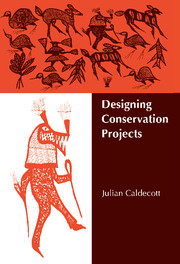Book contents
- Frontmatter
- Contents
- Foreword by Daniel H. Janzen
- Preface
- Acknowledgements
- 1 Introduction
- 2 Baram River, Sarawak
- 3 Cross River, Nigeria
- 4 Siberut and Flores Islands, Indonesia
- 5 Forest fragments in China and the Philippines
- 6 Costa Rican linkage projects
- 7 Irian Jaya, Indonesian New Guinea
- 8 Project themes and practicalities
- 9 Options for conservation
- 10 Options for development
- 11 Options for changing people's minds
- 12 Summary and conclusions
- Glossary
- Bibliography
- Index
3 - Cross River, Nigeria
Published online by Cambridge University Press: 04 February 2010
- Frontmatter
- Contents
- Foreword by Daniel H. Janzen
- Preface
- Acknowledgements
- 1 Introduction
- 2 Baram River, Sarawak
- 3 Cross River, Nigeria
- 4 Siberut and Flores Islands, Indonesia
- 5 Forest fragments in China and the Philippines
- 6 Costa Rican linkage projects
- 7 Irian Jaya, Indonesian New Guinea
- 8 Project themes and practicalities
- 9 Options for conservation
- 10 Options for development
- 11 Options for changing people's minds
- 12 Summary and conclusions
- Glossary
- Bibliography
- Index
Summary
Conservation issues
Land and people
At about 911 000 km2, Nigeria is about the same size as Venezuela and is larger than New Guinea, Borneo, or Texas. It lies between the southern margin of the Sahara Desert and the Atlantic Ocean, bordered by Niger and Chad to the north, Benin to the west and Cameroon to the east (Fig. 3.1). With nearly 90 million inhabitants in 1990, it is the most populous country in Africa and has about 14% of Africa's whole population. Hundreds of tribal groups live there, with many religions of which Islam and Christianity are the most common. Nigeria may be described simplistically as being divided into three parts, the north, south-west and south-east. These are dominated respectively by the mainly Muslim Hausa-Fulani, and the mainly non-Muslim Yoruba and Igbo peoples. These groups can be viewed as competing for national power, with the minority groups of the Middle Belt having a balancing role. This crude analysis does suggest how rulers have been able to transcend and exploit tribal and religious divisions, and to balance rival factions within first a Colonial and then a Federal political structure influenced by long periods of military rule.
In the later Colonial era, Nigeria was ruled by the British through the three logical Regions of North, West and East. Following independence in 1960, however, there was a move to create a Federal system based on states. A number of states were created in 1967, but this upset the traditional balance of power among major regional interests and led to the Civil War of 1967– 70 (Forrest, 1993).
- Type
- Chapter
- Information
- Designing Conservation Projects , pp. 30 - 60Publisher: Cambridge University PressPrint publication year: 1996



